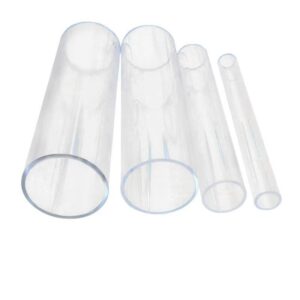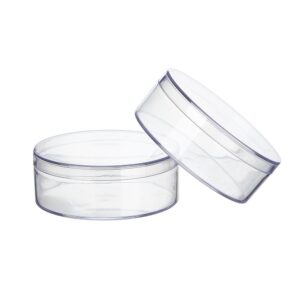Summary
Acrylic displays are widely utilized in various industries, including retail, exhibitions, and events, due to their lightweight, durable, and visually appealing nature. However, the safe transport and storage of these displays is critical to maintaining their integrity and aesthetic quality. Proper handling techniques, along with the use of appropriate materials, are essential to prevent damage such as scratches, cracks, or warping during movement and storage. The significance of this topic arises from the increasing reliance on acrylic displays for marketing and presentation purposes, where any damage can lead to substantial financial loss and negative customer perception.
Table of Contents
Transporting acrylic displays requires careful consideration of methods and materials to mitigate risks associated with handling. Recommended practices include using bubble wrap for cushioning, sturdy cardboard boxes for containment, and protective films to shield surfaces from dust and scratches. Additionally, employing the right tools, such as clamps and suitable adhesives, ensures that acrylic items remain stable and intact during assembly or modification. Ignoring these guidelines can result in severe damage, making awareness of best practices vital for individuals and businesses alike.
Environmental conditions also play a crucial role in both transport and storage. Storing acrylic displays in a climate-controlled environment away from direct sunlight can prevent deterioration caused by heat and UV exposure. Regular maintenance, including cleaning and inspections for damage, is essential for prolonging the lifespan of acrylic displays and maintaining their appearance. Notably, failure to follow these guidelines can lead to common mistakes, such as overcrowding displays or inadequate lighting, which can diminish their effectiveness and overall presentation.
In light of the increasing importance of acrylic displays in consumer interactions, understanding the protocols for safe transport and storage is paramount. By adhering to recommended practices, individuals and businesses can enhance the safety and longevity of their acrylic displays, ensuring that they remain effective tools for engagement and promotion in various settings.

Materials Needed
When preparing to transport and store acrylic displays, it is essential to gather the appropriate materials to ensure their safety and integrity. This section outlines the necessary tools and materials required for effective handling and packaging of acrylic products.
Packaging Materials
Bubble Wrap and Padding
To provide cushioning and protection against impact, it is crucial to use bubble wrap, which should be wrapped in multiple layers around the acrylic item. Additionally, soft materials such as foam or cloth can be placed between sheets of acrylic to prevent scratching and damage during storage. Corner protectors are also recommended to safeguard the most vulnerable edges of acrylic items.
Cardboard Boxes
After wrapping the acrylic items, place them in sturdy cardboard boxes. These boxes should fit snugly to avoid excessive movement but should not exert too much pressure on the acrylic surface. Packing peanuts or foam inserts can be utilized to fill any gaps within the box, ensuring that the items remain secure during transport.
Protective Films
Applying a protective film or plastic sheeting over the acrylic can prevent dust accumulation and surface scratches. This additional layer helps shield the acrylic displays from potentially damaging substances while in storage.
Tools for Handling and Machining
Cutting Tools
If alterations or precise cutting of acrylic sheets are necessary, tools such as a circular saw, table saw, jigsaw, and laser cutter should be employed. These tools facilitate accurate cuts while minimizing the risk of chipping or cracking the material.
Right Angle Picture Frame Clamp
A right angle picture frame clamp is a useful tool for securely holding acrylic sheets together while assembling or displaying them, ensuring they remain stable during the process.
Adhesives and Sealants
For any assembly or repairs, appropriate adhesives that do not off-gas harmful vapors should be used. It is important to select adhesives that are safe for use with acrylic materials to maintain their integrity and appearance. By gathering these materials and tools, one can effectively transport and store acrylic displays, reducing the risk of damage and ensuring they remain in pristine condition for exhibition or future use.
Preparing for Transport
Transporting acrylic displays requires careful planning and execution to ensure they arrive at their destination in pristine condition. Various modes of transportation are available, each with its own considerations and best practices.
Transportation Methods
Freight Forwarding
Utilizing a designated freight forwarder can streamline the transportation process. The shipper can benefit from better pricing due to the freight forwarder’s established relationships with carriers. The process typically involves booking the necessary space and coordinating delivery terms according to the specific needs of the shipment.
Railway Transportation
Railroad transport is viable for shipping goods from China to Europe, Central Asia, and Russia, offering a faster alternative to sea transport while being slower than air transport. This method is more suitable for medium-volume shipments and may involve higher costs compared to maritime options.
Trucking
Trucking has emerged as a quick alternative for transporting medium-volume cargo. However, this method is highly susceptible to weather conditions, which can lead to delays. Therefore, it’s crucial to account for potential weather-related disruptions when planning for transport.
E-Packet
For smaller parcels, the E-packet option provides an economical solution, though it is limited by weight and volume constraints. This service, primarily handled by national postal services, is not suitable for high-volume shipments.
Precautions for Transporting Acrylic Displays
When preparing acrylic displays for transport, specific precautions should be taken to prevent damage: Size Limitations: Be aware of the dimensions and weight restrictions imposed by transport vehicles. It’s advisable to consult local transportation regulations for compliance. Cleaning and Maintenance: Prior to transport, ensure the displays are cleaned using mild soap and a soft cloth to maintain clarity and avoid scratches. Harsh chemicals, such as ammonia or alcohol, should be avoided as they can damage the acrylic surface. Handling: When handling acrylic displays, always lift them rather than dragging to minimize wear. Ensure that those involved in the transport are trained in the correct handling procedures to reduce the risk of damage.

Packing the Acrylic Displays
Acrylic packing is a critical process to ensure the safety and integrity of acrylic dis- plays during transportation and storage. Given their lightweight and durable nature, acrylic products can be susceptible to scratches, cracks, and other forms of damage if not properly packaged. The following outlines essential steps and best practices for effectively packing acrylic displays.
Packing Process
1. Preparation
Before packing, ensure that all acrylic items are clean and dry. This helps prevent scratches and damage during transit. It is advisable to cover the surfaces with protective films, soft cloths, or polyethylene sheeting to guard against dust and debris.
2. Wrapping
Wrap each acrylic piece in multiple layers of bubble wrap, paying particular attention to corners and edges, which are the most vulnerable areas. This cushioning not only protects against impact but also helps absorb shocks during transport.
3. Corner Protection
Use corner protectors specifically designed for acrylic items. These can be foam or padded covers that safeguard the delicate edges and provide additional cushioning.
4. Box Placement
Place the wrapped acrylic display inside a custom-designed box or crate that includes dividers or inserts to prevent movement during transit. Ensure that the box fits snugly, but does not require excessive force to close. If there are gaps, fill them with packing peanuts or foam inserts to minimize any shifting.
5. Sealing the Box
Seal the box securely with strong packing tape, reinforcing the seams and edges to enhance durability. Clearly label the package as “Fragile” to alert handlers of the delicate contents inside.
Additional Considerations
Ventilation: Depending on the display’s design, consider incorporating ventilation features in the packaging to avoid moisture buildup, which can affect the acrylic’s integrity. Handling Instructions: Along with labeling the package, it may be beneficial to include handling instructions inside the box to further ensure careful treatment during transportation. Regular Maintenance: After unpacking, it’s essential to inspect the acrylic displays for any signs of damage. Regular maintenance and prompt repairs can significantly extend the lifespan of the displays.
By adhering to these guidelines, businesses and individuals can effectively protect their acrylic displays from potential damage during transportation and storage, ensuring they arrive at their destination in optimal condition.
Transporting the Acrylic Displays
Transporting acrylic displays requires careful planning and execution to prevent damage. The lightweight and durable nature of acrylic makes it a popular choice, as it is significantly lighter than glass and offers better impact resistance. However, specific practices should be followed to ensure these displays remain intact during transit.
Secure Positioning
To prevent movement and potential damage, acrylic displays should be securely positioned in transport vehicles. This can be achieved by using straps, bands, or other securing methods to hold the displays firmly in place. It is crucial to avoid shifting or falling during transit, which can lead to scratches, dents, or cracks.
Protective Packaging
Proper packaging is vital for safeguarding acrylic displays. Utilizing suitable materials such as bubble wrap, foam, or padding helps provide cushioning against impacts and vibrations during transportation. Additionally, applying protective films or covers to the surfaces of the displays can further shield them from scratches and damage.
Transport Recommendations
When transporting acrylic displays, it is advisable to keep them in an upright position to minimize the risk of damage. The vehicle used for transport should be stable, and travel should occur at slower speeds to avoid jostling. Moreover, for larger panels, special permits or route surveys may be necessary to comply with local transportation regulations.
Environmental Considerations
Maintaining an appropriate ambient temperature is also essential. During transportation, the temperature should not exceed 70℃, while long-term storage should occur below 40 ℃ in a dry and ventilated environment. Protecting acrylic displays from direct sunlight is important to prevent UV-related damage, ensuring their longevity and clarity. By adhering to these guidelines, individuals and businesses can effectively transport acrylic displays while minimizing the risk of damage.

Storing Acrylic Displays
Proper storage of acrylic displays is crucial for maintaining their clarity, durability, and overall appearance. Acrylic is a lightweight and durable material, but it is sensitive to environmental conditions. To ensure the longevity of acrylic displays, consider the following best practices.
Choosing the Right Environment
Temperature and Humidity Control
Acrylic displays should be stored in a climate-controlled environment, ideally between 60-80°F (16-27°C) to prevent warping and brittleness. High humidity can lead to condensation on the surface, while low humidity may cause the material to become brittle. Regular use of dehumidifiers or humidifiers may be necessary to maintain stable humidity levels, especially in environments prone to fluctuations.
Avoiding Direct Sunlight
It is essential to store acrylic displays away from direct sunlight. UV rays can cause discoloration and degradation over time, reducing the lifespan of the material. Utilizing protective coverings or storing displays in shaded areas can help mitigate this risk.
Storage Techniques
Proper Stacking and Support
When stacking acrylic sheets, ensure that weight is evenly distributed to avoid pressure points that could lead to distortion. Additionally, using proper support is crucial; inadequate support can allow gravity to negatively affect the shape of the acrylic over time.
Use of Protective Coverings
During transportation or storage, acrylic sheets should be covered with protective materials like kraft paper or polyethylene film. This helps shield them from dust, moisture, and potential physical damage. Regular inspections of the storage area for signs of moisture or dust can further help in maintaining the condition of acrylic displays.
Maintenance Tips
Regular Cleaning
Regular cleaning is vital for preserving the appearance and functionality of acrylic displays. Use a soft cloth and non-abrasive cleaners to avoid scratching the surface.
Monitoring Environmental Conditions
Keep an eye on the storage environment, regularly checking for any changes in temperature or humidity that could affect the integrity of the acrylic. By following these best practices, you can protect your investment and ensure that your acrylic displays remain in optimal condition for future use.
Common Mistakes to Avoid
When it comes to transporting and storing acrylic displays, there are several common mistakes that can lead to damage or ineffective presentation. Avoiding these pitfalls can enhance the overall safety and visual appeal of your displays.
Overcrowding the Display
One of the most significant errors is overcrowding the display. When items are packed too closely together, it can create a cluttered and chaotic look, diminishing the impact of individual pieces. Ensuring that there is enough space between items not only makes each piece stand out but also enhances the overall shopping experience by facilitating easier browsing.
Poor Lighting
Inadequate lighting is another frequent mistake. Poorly lit displays make products less appealing and harder to see, which can significantly deter customer interest. Utilizing spotlights, backlights, or natural lighting can effectively highlight key displays, drawing attention and boosting potential sales.
Neglecting Seasonal Updates
Failing to update displays seasonally can make a store feel stale and uninviting. Outdated signage, colors, and featured products can cause customers to lose interest. Regularly refreshing the visuals in your displays keeps them engaging and relevant, encouraging customers to revisit.
Ignoring the Checkout Area
The checkout area often gets overlooked, yet it plays a crucial role in customer experience. A poorly organized or neglected checkout can frustrate customers, leading to abandoned purchases. It’s essential to ensure that this area is well-stocked, organized, and aesthetically pleasing.
Lack of a Cohesive Design
Inconsistent design elements across displays can create confusion and diminish brand perception. Mismatched racks, shelves, and signage contribute to a chaotic atmosphere that can drive customers away. A cohesive design with consistent themes improves brand trust and customer confidence in the products being offered. By being mindful of these common mistakes, retailers can significantly enhance the safety, effectiveness, and aesthetic appeal of their acrylic displays.

Safety Protocols and Regulations
Overview of Safety Precautions
Transporting and storing acrylic displays requires adherence to specific safety protocols to mitigate risks and ensure the protection of both the displays and individuals involved in the handling process. Implementing effective safety measures can significantly reduce the likelihood of accidents and damage during transportation.
Essential Safety Tips
When working with acrylic materials, it is crucial to follow five essential safeties. tips: wearing personal protective equipment, ensuring adequate ventilation, handling acrylic with care, employing proper lifting techniques, and securing loads during transport. These practices help safeguard against potential hazards associated with acrylic handling.
Best Practices for Transporting Acrylic Displays
Crating and Packaging Techniques
The most protective method for transporting acrylic displays is crating, which emphasizes best practices that artists and transporters should ideally follow. While alter- native creative transportation methods may be employed, it is essential to recognize that these methods inherently carry greater risks of damage. As one moves away from crating and towards less protective techniques, the risk of accidents increases significantly.
Labeling and Regulatory Compliance
When shipping acrylic displays, particularly when they fall under regulated categories (such as class 3 hazard materials), proper labeling is required to inform handlers of the risks involved. For instance, the use of class 3 hazard class labels is mandatory when shipping fully regulated materials such as UN1263 by air or sea. Compliance with these regulations is critical for ensuring safe transport and minimizing liability.
Maintenance and Care
To prolong the life and performance of acrylic display stands, regular maintenance and care are necessary. This includes thorough cleaning, checking for structural stability, and timely replacement of damaged components. Establishing a maintenance schedule tailored to the specific usage of the displays can significantly enhance their durability and operational reliability.

















